Busting the cost barrier: Why electric three-wheelers make business sense
by and -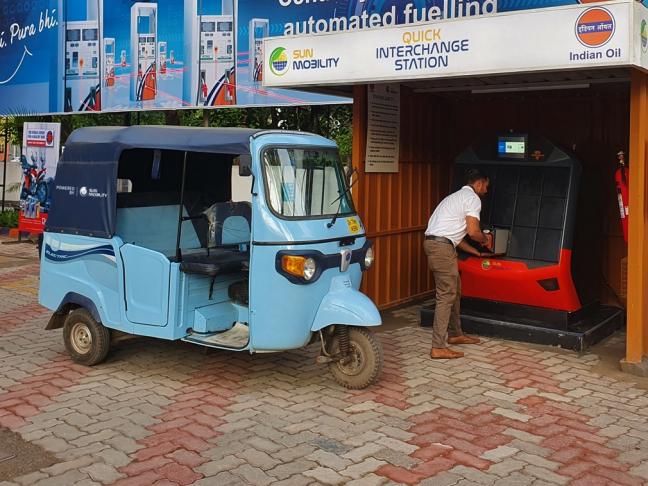
In recent years, electric three-wheelers, especially e-rickshaws, have been growing in numbers in India. Positioned as an affordable means of intermediate public transportation over short-to-medium distances, the three-wheeler segment is generally considered as low hanging fruit in electric vehicle adoption on account of its ubiquitous appeal.
In this blog, which is a part of the TCO (Total Cost of Ownership) blog series, we discuss the cost of owning and operating different variants of electric three-wheelers (e-3Ws) vis-à-vis their Internal Combustion Engine (ICE) variants.
The electric three-wheeler market in India
The two variants considered in the e-3W segment, e-autos and e-rickshaws, differ primarily in the design and specifications of the electric powertrain, performance (in terms of torque and maximum speed) and passenger capacity. E-rickshaws are a low-cost variant of e-3Ws without an exact ICE counterpart.
Currently, the e-3W market is dominated by e-rickshaws, where unorganized players have 80% of the market share. About 10,000 units per month are sold by unorganized players as compared to 1,500-2,000 units by organized players. The e-auto segment, on the other hand, has a much more planned structure with sales of about 700 vehicles in 2018-19 and with upcoming players entering the market.
Of the 2.8 lakh electric vehicles that availed purchase subsidies through Phase-1 of the Faster Adoption and Manufacturing of Electric Vehicles (FAME-I) scheme between April 2015-March 2019, only about 1% were e-3Ws. The FAME-II scheme, which comprises a more sizeable outlay of INR 8,596 crore for vehicle purchase subsidies across select vehicle segments, include incentives of INR 2,500 crore for approximately 5 lakh commercial e-3Ws, including e-rickshaws. However, there are a few qualifying specifications, in terms of range, speed, battery capacity and technology, that need to be met to avail the incentives.
At the state level, Delhi is paving the way for an e-3W market by offering both financial and non-financial incentives such as an open permit system, targeted purchase subsidies, interest subvention on loans, hire purchase scheme, scrapping incentives along with no additional cost permit exchange system etc. Kerala’s state EV policy offers another bold measure — the proposal to give commercial permits only to e-3Ws.
Figure 1 provides an overview of e-3W sales that availed incentives under FAME-I and FAME-II. The consumer demand for e-3Ws is observed to be concentrated largely in the northern, central and eastern parts of the country.
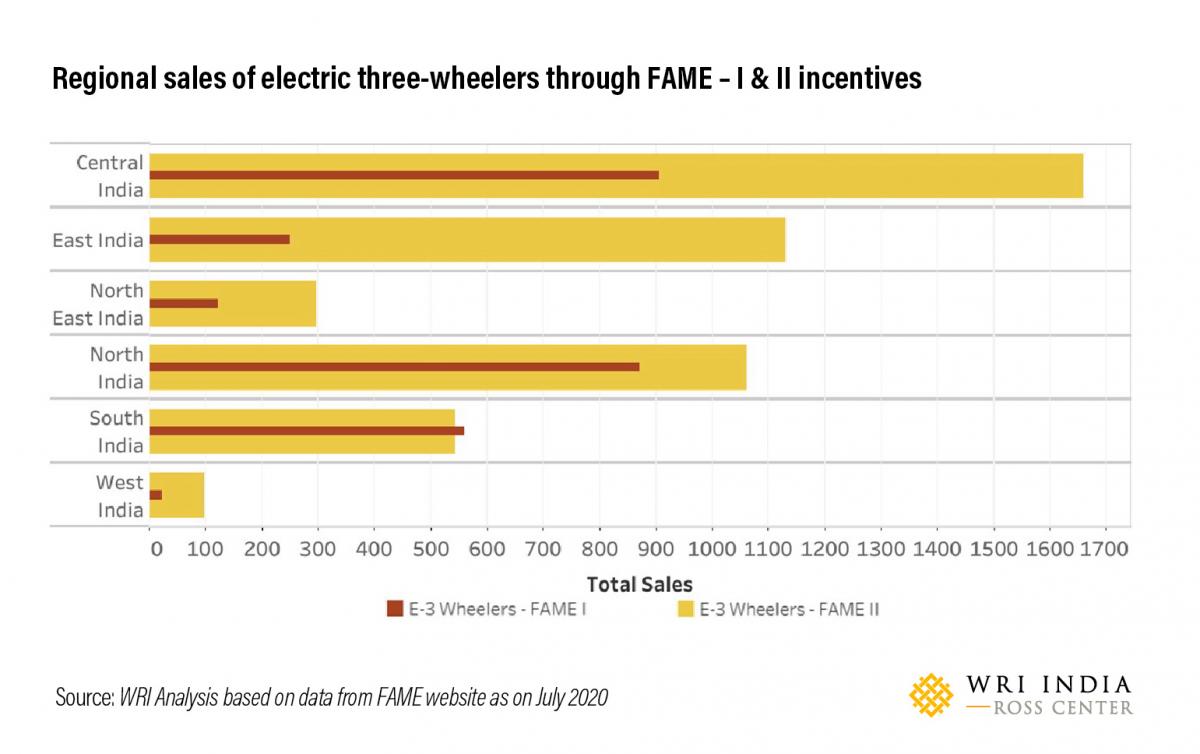
Economic viability - Insights from our Total Cost of Ownership (TCO) analysis
In our Total Cost of Ownership (TCO) analysis for the 3W segment, we considered lithium-ion battery (LIB) powered e-autos and e-rickshaws along with corresponding ICE variants powered by CNG, petrol, and diesel. Figure 2 compares the TCO per km for these models considering that the average trip length per day for 3Ws in ride hailing fleets varies between 80-150 km in urban areas.
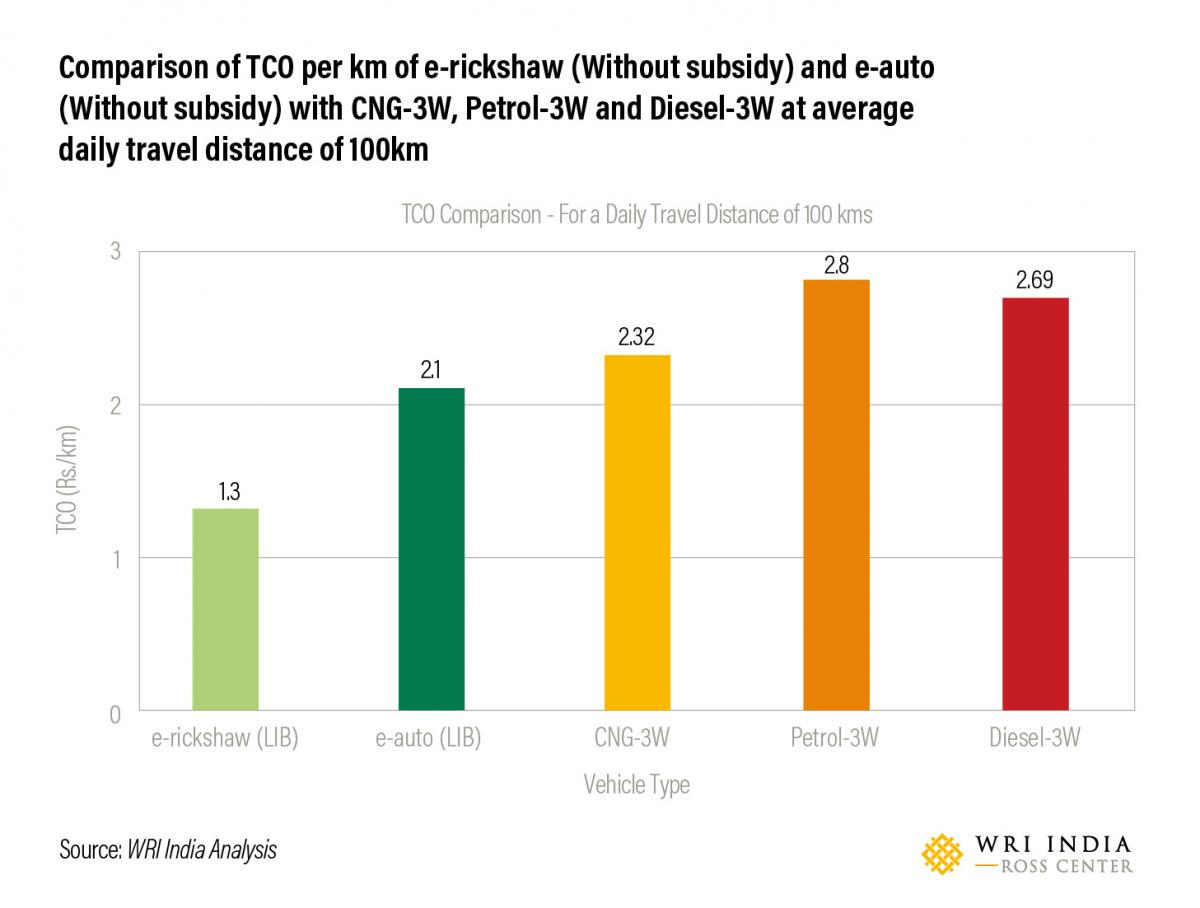
When you consider Figure 2, you can see that at an average of 100 km per day usage, the TCO per km of e-rickshaws (INR 1.30/km) and e-autos (INR 2.10/km) is lower than the corresponding ICE variant (CNG-3W, Petrol-3W, and Diesel-3W). This highlights the viability of e-3Ws for typical commercial applications. Additionally, with a FAME-II subsidy of INR 37,000 for e-rickshaws and INR 66,523 for e-autos, the TCO per km of e-rickshaws (INR 0.99/km) and e-autos (INR 1.82/km) become even more economical.
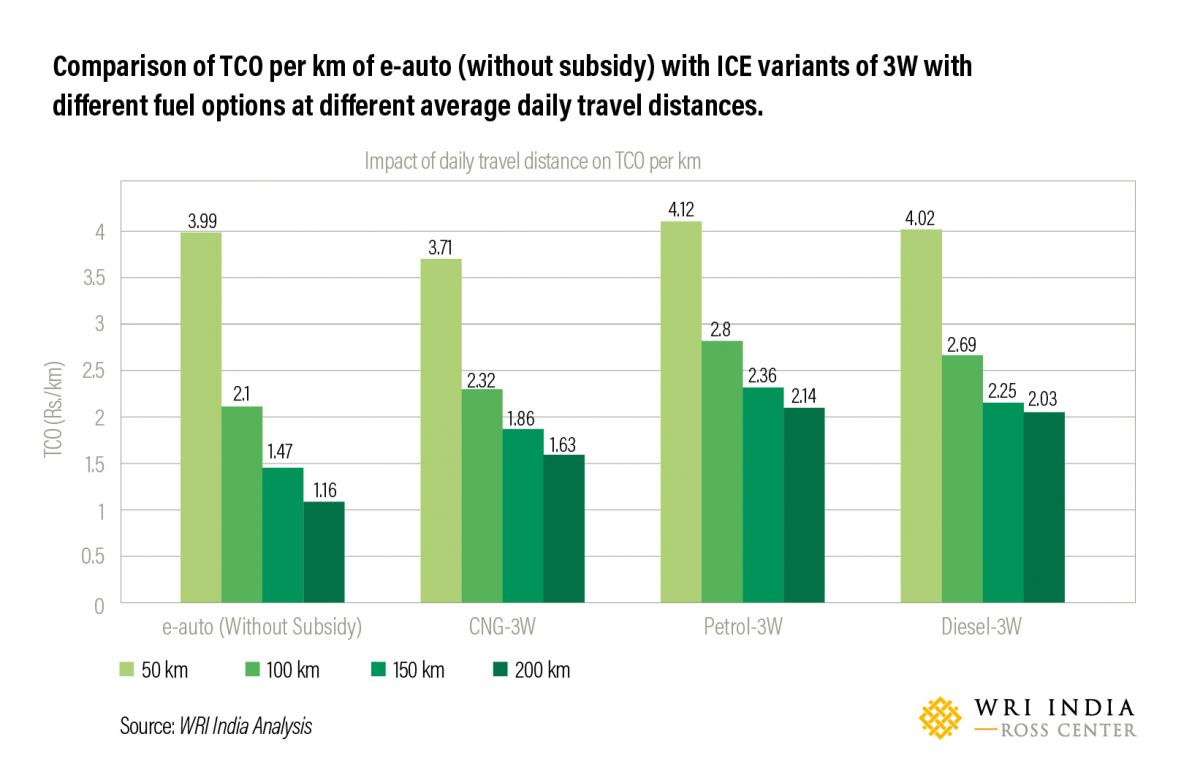
Figure 3 depicts the impact of variation in daily travel distance on TCO per kilometer for e-autos and its ICE variants. At a daily travel distance above 100 km per day for e-autos, TCO per kilometer is less than its ICE counterpart even without any upfront capital subsidy and the gap further widens as the average trip length per day increases, making it even more economical.
Figure 4 shows the comparison of year-wise TCO per kilometer of e-autos (with and without FAME-II subsidy) and its ICE counterparts with different fuel options. At an average daily travel distance of 100 km, the TCO per kilometer of e-autos (without subsidies) becomes cheaper than its petrol and diesel variants by the third year of ownership and becomes lesser than its CNG variant from the sixth year onwards. Note that the break-even year, the year beyond which an e-auto becomes cheaper than its ICE counterpart, happens earlier with increasing vehicle utilization and decreasing vehicle purchase cost. With the FAME-II subsidy of INR 66,523, the TCO per kilometer of e-autos becomes less than ICE variants from year one itself.
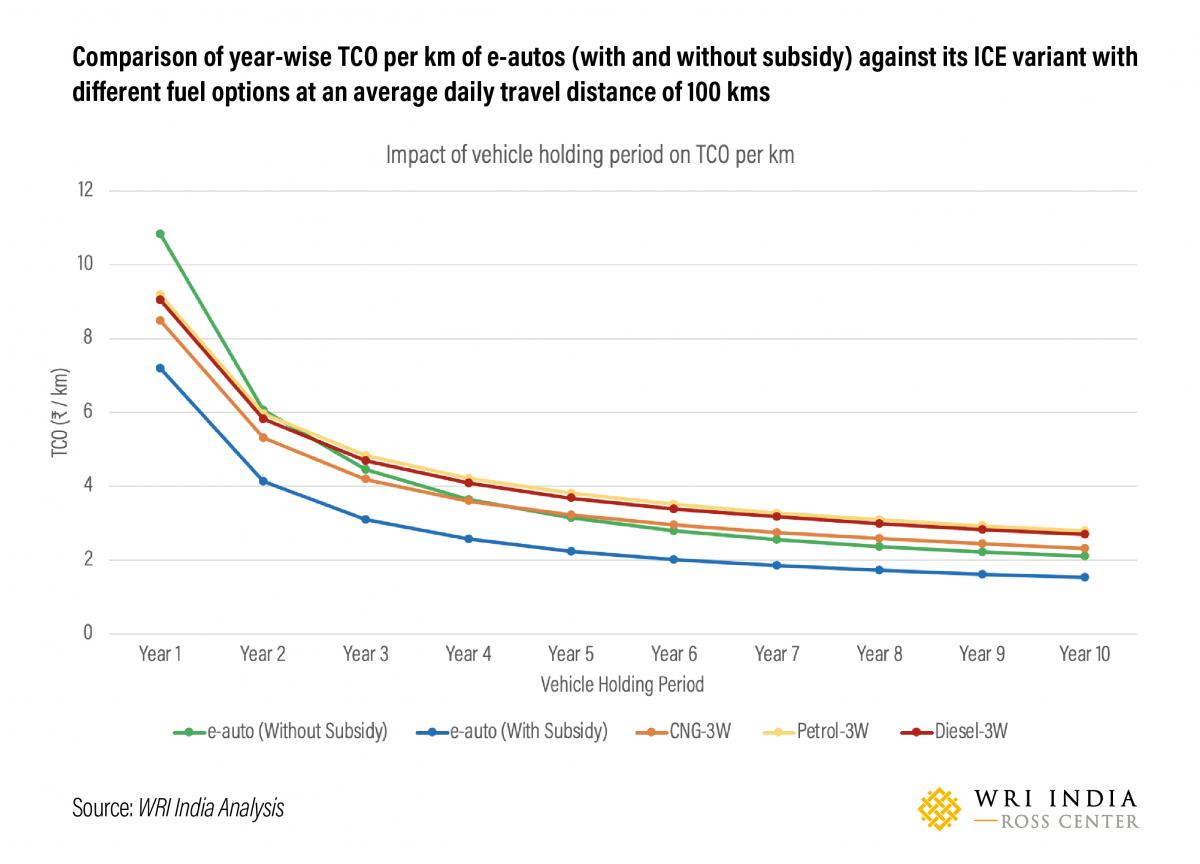
Emerging Market Trends
Recently, the government of India began allowing the sale of e-3Ws without battery which significantly reduces purchase cost — a significant barrier to adoption. The lightweight and compact nature of lithium-ion batteries, used in e-3Ws, make it well-suited for the battery swapping model. In this model, a discharged battery can be replaced immediately with a fully charged one, offering consumers an experience similar to the re-fueling of ICE vehicles. While the upfront cost may be reduced by about 30-40% for e-3Ws without battery, its operating cost will be relatively higher than e-3Ws with battery.
E-3Ws with high assured utilization rates are a more profitable prospect for businesses, as they become cheaper to operate per-kilometer with increased utilization. This has been recognized by big companies in the Indian market. Amazon plans to add 10,000 electric rickshaws to its delivery fleet in India by 2025. Similarly, furnishing giant IKEA, and retail joints like Big Basket, Flipkart and Grofers are among those increasingly relying on e-rickshaws for clean and economical last-mile delivery.
Way Forward
While the TCO analysis indicates that e-3Ws are economically competitive especially with higher vehicular utilization, this is contingent on a well-distributed charging infrastructure network that reduces dead kilometers, and innovative systems such as battery swapping which cuts down the time spent in battery charging. At the early phase of transition, when the support infrastructure hasn’t matured enough, financial incentives as well as non-financial incentives can help forge the transition to e-3Ws. Policy instruments such as scrappage incentives will further aid in accelerating the adoption of e-3Ws.
This is the third blog in a series on TCO analysis of electric vehicles in the Indian market. In the upcoming blogs, we will focus on the findings of the TCO analysis for other vehicle segments, to demystify the total costs of owning and operating EVs for individuals and fleet operators, analyze the role of financial incentives and vehicle utilization patterns, and highlight specific implications for policy makers and manufacturers.
Read the previous blog in this series here.
Views expressed here are the author's own.


